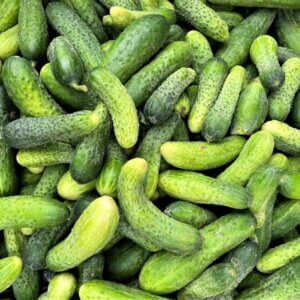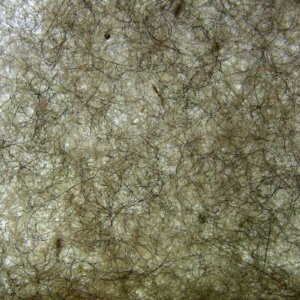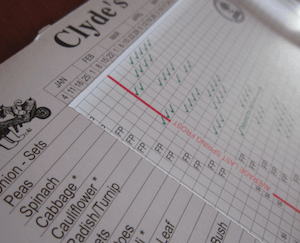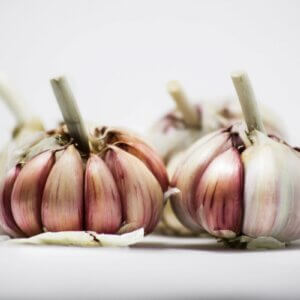
The definition of a whole food, is a natural food that has not been processed or has been refined as little as possible. Unfortunately, ultra-pasteurized, homogenized, grain-fed cow’s milk is not a whole food. It is highly manipulated.
It Started with Kefir Grains
I decided to start making real kefir from living kefir grains to benefit from thirty plus probiotics, as opposed to the seven probiotics in most commercial kefirs. I had recently discovered that commercial or pseudo-kefirs simply have dried probiotic powders added to them; they are not traditionally cultured. (Actually they are cultured with freeze-dried kefir powder, then pasteurized, then powdered probiotics are added back in after the pasteurization process has killed any living probiotics.) So a bit of research began. The first instruction I saw on a few different blogs was that kefir grains will not thrive in ultra-pasteurized milk. The blogs claimed ultra-pasteurized milk was too dead to nourish the culture. To my surprise, the organic milk I had just purchased was ultra-pasteurized! Not being a milk drinker, this was new territory. I started looking at other brands of organic milk, wow, all the big name brands and their re-brands are ultra-pasteurized.
What Is Ultra-Pasteurized Milk?
I knew ultra-pasteurized meant that the milk had been heated at a higher temperature than regular pasteurized milk. UHT or Ultra High Temperature processing takes cold milk to 280° F for 2-10 seconds, whereas in regular pasteurization the milk is brought to 161° F for 15-20 seconds, a one hundred and nineteen degree difference. What I didn’t know was that ultra-pasteurized milk is the same as extended shelf life milk, the stuff in tetra paks. This sterilized milk has a shelf life of up to 9 months in sealed containers and 3 months in a refrigerated carton (until opened). No wonder milk never seems to go bad anymore! Milk companies simply learned to repackage the extended shelf life milk into refrigerated containers and sell it in the cold dairy section, instead of in the warm tetra paks that Americans never took to. Brilliant of them, bad for the consumer, I fast found out.
It turns out milk proteins (casein) are complex, fragile, three-dimensional molecules and heat flattens and deforms those molecules. So the heating process alters and breaks up the milk proteins, and then also destroys the milk’s natural vitamin C, B6 and B12, and destroys all the natural enzymes found in milk. So, we are left with flattened casein that is difficult to digest with few remaining vitamins or minerals.1 Actually the test for successful pasteurization is absence of enzymes, so our bodies must work overtime to make the enzymes needed to digest pasteurized milk. All fresh, raw, unprocessed foods carry their own enzymes.
Another early and sometimes still valid complaint about UHT milk is that it tastes burnt. Milk bottlers have been working on this annoyance for decades and additives such as epicatechin (a flavonoid compound) may be added to suppress odor and restore taste. And yet another complaint is that due to the milk protein alteration at high temperatures, ultrapasteurized cream can take much longer to whip and does not achieve the same light, fluffy texture that raw or pasteurized cream can attain.
Homogenization Of Milk
Not only is modern milk pasteurized, but homogenized as well. This mechanical process forces the fat molecules through sieves or mills so they will all be a consistent size (and in the process heats the milk again). Homogenization destroys the original, large fat globules and numerous smaller, layered globules are created. The fat globules are made smaller by a factor of ten to fifty times and now carry the reactive xanthine oxidase.2a It appears these broken up, micronized proteins may now leak out of the gut and enter the lymph and bloodstream and irritate arterial walls. As the arterial walls become continually irritated, plaque grows over the irritation as a protective barrier. Before homogenization, when milk fat was its natural size, milk proteins were easily digested in the digestive tract and stayed in the digestive tract.2b
Homogenization has made it possible for production dairies to standardize milk fat. Prior to homogenization, milk fat differed as per cow, nutrition and environment, with a typical milkfat composition between 3.5% and 5.5%. Now, all commercial milk is completely defatted and then the fat is homogenized back in as per the desired proportion. Today’s whole milk has a standard 3.25% milkfat.
If milk is not homogenized the cream will float to the top. A simple solution to that is shaking before drinking, but years ago milk bottlers decided we should not have to perform that simple task. Too bad because that one container of milk could have pleased the full fat, and low fat drinkers of milk in a household and homogenization appears to have unhealthy consequences.
Fat Milk vs Skim Milk
If you are a fat free milk drinker, your milk is absent all its fat-soluble vitamins (A, D, E, and K and carotenoids) and lacking its natural synergy. You need the fat, to digest the fat soluble vitamins. Adding synthetic forms of vitamins A & D back into the milk is not the same as getting those real, live, natural vitamins that were contained in the fat. The added synthetic A & D are not taken up by our bodies without the fat. Also, fat soluble vitamins digest milk’s calcium, so without them, you are not absorbing the milk’s calcium.3
If you are drinking low fat milks, know that powdered skim milk or other milk solids are frequently added back in to fat free milk to improve its creaminess and color. Skim milk would be watery and pale blue and therefore impossible to sell without the added powder. This addition of powdered milk into skim milk does not have to be listed on the label. Unfortunately, it has been shown that commercial dehydration methods used to make powdered milk oxidize the milk’s cholesterol, rendering it harmful to the arteries, just like rancid/oxidized oils are bad for the arteries.4 High temperature drying also produces large quantities of cross-linked proteins, nitrate compounds and free glutamic acid (MSG), all of which are stressful to our bodies.5
Many are now saying full fat milk is better for you than skim or low-fat milk, and that saturated fats are not the culprit for our health woes.6 Fats give us energy and are the carriers of the fat-soluble vitamins A, D, E, and K and carotenoids. And as said before those fat soluble vitamins are needed to digest calcium and protein, and real food vitamins are always better for you and more absorbable than the synthetic form. Butterfat is rich in short- and medium-chain essential fatty acids, long-chain trans-palmitoleic acid, conjugated linoleic acid and omega-3 fatty acids, all of which protect against disease and stimulate the immune system.7 Also, fat satisfies your appetite by triggering the release of the hormone cholecystokinin, which creates a feeling of satiation, so the body can go longer without feeling hungry. So a little more ‘healthy fat’ might be good for weight maintenance.8 You might crave ice cream less if you have full fat milk with your cereal in the morning. Fat is actually really important for many of our body’s functions, and the recommended adult fat intake is between 15 and 30 percent of our total calories. The fats we should be eliminating are the man-made fats such as trans-fats and refined polyunsaturated fats in vegetable oils.
Antibiotics In Milk
Modern cows are breed to produce huge quantities of milk, at least twice as much as forty years ago, and all this mechanical milking irritates the cow’s udders and in course they become infected. If the udders become infected they release pus and the infection might overwhelm the cow and put her out of commission. So, milk farmers add enormous quantities of antibiotics to keep the infections in check. These days many cows are also kept in confinement and fed grains, not their natural diet of grass. Grain (GM corn and GM soy) fed cows tend to be hosts to numerous diseases, so again antibiotics are pumped into these poor beasts to make them live longer and produce more. Today’s confinement cows are also fed pesticide-tainted dried citrus peels, left over from juice processing, and bakery waste. And of course the growth hormones we have all read about, adds to this chemical cocktail.
Raw Milk
Another thing I learned in understanding the slow process of culturing, is that raw milk left out will sour and is still drinkable, because raw milk’s antimicrobial properties are still intact. But high heat and pressurized milk oxidizes—it becomes rancid. Rancid pasteurized milk must be thrown out.
Pasteurization was declared the law in the 1920s when unsanitary production methods and poor animal nutrition were rampant. Today, stainless steel tanks and refrigerated trucks make the dangers of raw milk less likely. Actually raw milk’s natural bacteria and enzymes counteract the growth of pathogens.
I do not have easy access to raw milk, but if you do, also note that that the older breeds of cows (jerseys, guernseys) and goat, sheep, yak (and human milk) are high in easy to digest A2 beta casein and the newer breeds of cow, like holsteins, are high in a tougher-to-digest A1 beta casein.
For my kefir making, my goal is to find lightly pasteurized, non-homogenized, local, grass-fed milk.
Remember all the big name organic milks are ultra-pasteurized and grain-fed…
Check out this website on raw milk for sources and LOTS more info…(like co-owning a cow through a herdshare arrangement). realmilk.com
Postscript: the kefir grains did fine in the UHT milk! But after all this research, of course I will not purchase it again, unless nothing else is available.
Dairy Farms Rated
Researchers at the Cornucopia Institute investigated the production practices of about 70 dairies nationwide. Their “4 Cow”- and “5 Cow”-rated superstars take sustainability seriously—producing happier cows and a healthier product. To view the list, see “Maintaining the Integrity of Organic Milk”.
Notes And Further Reading On Milk
1) From Sally Fallon’s Nourishing Traditions
“Heat alters milk’s amino acids lysine and tyrosine, making the whole complex of proteins less available; it promotes rancidity of unsaturated fatty acids and destruction of vitamins. Vitamin C loss in pasteurization usually exceeds 50%; loss of other water-soluble vitamins can run as high as 80%; the Wulzen or anti-stiffness factor is totally destroyed as is vitamin B12, needed for healthy blood and a properly functioning nervous system. Pasteurization reduces the availability of milks mineral components, such as calcium, chloride, magnesium, phosphorus, potassium, sodium and sulfur, as well as many trace minerals. There is some evidence that pasteurization alters lactose, making it more readily absorbable. This, and the fact that pasteurized milk puts an unnecessary strain on the pancreas to produce digestive enzymes, may explain why milk consumption in civilized societies has been linked with diabetes.” newtrendspublishing.com
2a) Homogenized Milk and Atherosclerosis
Homogenized milk and atherosclerosis are connected by the theory that the enzyme xanthine oxidase or XO, which is abundant in cow’s milk, transforms inflammation following physical, chemical or emotional stress into a degenerative disease process resulting in atherosclerosis.[1] XO is implicated in the formation of free radicals and in cyclical episodes of tissue damage or oxidative stress with degenerative disease symptoms largely characterized by the locale of the initial, inflammatory event.[2] As a central generator of reactive oxygen species (ROS) during inflammation, XO is linked to as many as 50 illnesses from Alzheimer’s and arthritis to diabetes and cancer.[3] wikipedia.org/wiki/Homogenized_Milk
2b) Homogenized Milk: Rocket Fuel for Cancer by Robert Cohen, health101.org & www.notmilk.com
A=Year
B=Number of cows in America (millions)
C=Billion pounds of milk produced in America each year
D=Quarts of milk produced per cow each day
E=Population of the United States in millions
F=Average daily consumption of milk per person (pounds)
G=Number of persons (daily milk consumption) supplied by one cow
A B C D E F G
1930 22.2 100.2 5.6 123.2 2.2 5.6
1940 23.7 109.4 5.8 132.2 2.3 5.6
1950 21.9 116.6 6.6 151.3 2.1 6.9
1960 17.5 123.1 8.8 179.3 1.9 10.2
1970 12.0 117.0 12.1 203.3 1.6 16.6
1980 10.8 128.4 14.8 226.5 1.6 20.4
1990 10.2 147.7 18.0 248.8 1.6 24.8
1998 9.3 156.6 22.3 270.0 1.6 30.7
3) From Michael Pollen’s In Defense of Food
“To make dairy products low fat, it’s not enough to remove the fat. You then have to go to great lengths to preserve the body or creamy texture by working in all kinds of food additives. In the case of low-fat or skim milk, that usually means adding powdered milk. But powdered milk contains oxidized cholesterol, which scientists believe is much worse for your arteries than ordinary cholesterol, so food makers sometimes compensate by adding antioxidants, further complicating what had been a simple one-ingredient whole food. Also, removing the fat makes it that much harder for your body to absorb the fat-soluble vitamins that are one of the reasons to drink milk in the first place.” – Michael Pollan
4) Is Skim Milk Making You Fat? How the “diet” dairy choice is putting your health—and waistline—at risk
“To turn skim milk white, “some companies fortify their product with powdered skim,” says Bob Roberts, a dairy scientist at Penn State. Powdered skim (which is also added to organic low-fat milks) is produced by spraying the liquid under heat and high pressure, a process that oxidizes the cholesterol. In animal studies, oxidized cholesterol triggers a host of biological changes, leading to plaque formation in the arteries and heart disease, Spanish researchers reported in 1996. “OCs are mutagenic and carcinogenic,” they wrote. In 1998, Australian researchers studied rabbits fed OC and found that the animals “had a 64% increase in total aortic cholesterol” despite having less cholesterol in their blood than rabbits fed natural sources of the substance. (A 2008 Chinese study with hamsters confirmed these findings.) Roberts says the amount of OC created by adding powdered skim is “not very much,” but until the effects on humans are known, it’s impossible to say what’s a safe level.” Read More details.com
5) From Sally Fallon’s Nourishing Traditions
“Commercial dehydration methods oxidize cholesterol in powdered milk, rendering it harmful to the arteries. High temperature drying also creates large quantities of cross-linked proteins and nitrate compounds, which are potent carcinogens, as well as free glutamic acid, which is toxic to the nervous system.”
6) Rethinking Saturated Fat by Dr. Andrew Weill.
“A scientific analysis of 21 earlier studies, which showed “no significant evidence” that saturated fat in the diet is associated with an increased risk of coronary heart disease. The 21 studies analyzed included nearly 348,000 participants, most of whom were healthy when they were enrolled. They were followed for five to 23 years, during which 11,000 developed heart disease or had a stroke. Looking back at the dietary information collected from these thousands of participants, the investigators found no difference in the risk of coronary heart disease, stroke, or coronary vascular disease between those individuals with the lowest and highest intakes of saturated fat. This goes completely against the conventional medical wisdom of the past 40 years. It now appears that many studies used to support the low-fat recommendation had serious flaws.” drweil.com
Dairy consumption and patterns of mortality of Australian adults
“People who ate the most full-fat dairy had a 69% lower risk of cardiovascular death than those who ate the least. Otherwise stated, people who mostly avoided dairy or consumed low-fat dairy had more than three times the risk of dying of coronary heart disease or stroke than people who ate the most full-fat diary. Contrary to popular belief, full-fat dairy, including milk, butter and cheese, has never been convincingly linked to cardiovascular disease. In fact, it has rather consistently been linked to a lower risk, particularly for stroke.” nature.com
7) Trans-Palmitoleic Acid, Metabolic Risk Factors, and New-Onset Diabetes in U.S. Adults: A Cohort Study, Dec, 2010.
“In multivariate analyses, whole-fat dairy consumption was most strongly associated with higher trans-palmitoleate levels. Higher trans-palmitoleate levels were associated with slightly lower adiposity and, independently, with higher high-density lipoprotein cholesterol levels (1.9% across quintiles; P = 0.040), lower triglyceride levels (-19.0%; P < 0.001), a lower total cholesterol–HDL cholesterol ratio (-4.7%; P < 0.001), lower C-reactive protein levels (-13.8%; P = 0.05), and lower insulin resistance (-16.7%, P < 0.001). Trans-palmitoleate was also associated with a substantially lower incidence of diabetes, with multivariate hazard ratios of 0.41 (95% CI, 0.27 to 0.64) and 0.38 (CI, 0.24 to 0.62) in quintiles 4 and 5 versus quintile 1 (P for trend < 0.001). Findings were independent of estimated dairy consumption or other fatty acid dairy biomarkers. Protective associations with metabolic risk factors were confirmed in the validation cohort.” annals.org
8) Is Skim Milk Making You Fat? How the “diet” dairy choice is putting your health—and waistline—at risk. By Paul John Scott.
In 2005, researchers from the Harvard School of Public Health and other institutions studied the weight and milk consumption of 12,829 kids ages 9 to 14 from across the country. “Contrary to our hypothesis,” they reported, “skim and 1% milk were associated with weight gain, but dairy fat was not.” details.com
Association between dairy food consumption and weight change over 9 years in 19,352 perimenopausal women – American Journal of Clinical Nutrition.
“Dairy foods may play a role in the regulation of body weight. Women who ate at least one serving of full-fat dairy a day gained 30 percent less weight over a nine-year period than women who ate only low-fat (or no) dairy products.” ajcn.org









































Vegan diet. If you are ‘green’ you will be vegan..do 2 ways around it. A healthy, delicious and diverse way of feeding oneself
vit ‘D’ is stable in heat the only vitamin not stable in heat is’ C’ SO HEATING MILK DOES NOT ALTER IT TO ANY APPREACHABLE EXSTENT
only raw milk is a whole food which means it hasn’t been manipulated at all. it comes from Camphill farm near Paarl here in the western cape and I get mine from The Healing Tree health shop in Adelphi centre, sea point. One has to order on a weekly basis and return the bottle to get ones deposit back but it’s real milk still with the cream on top.regards Jean
thank u very much …………………..i have got what i m finding
thank u very much …………………..i have got what i m finding